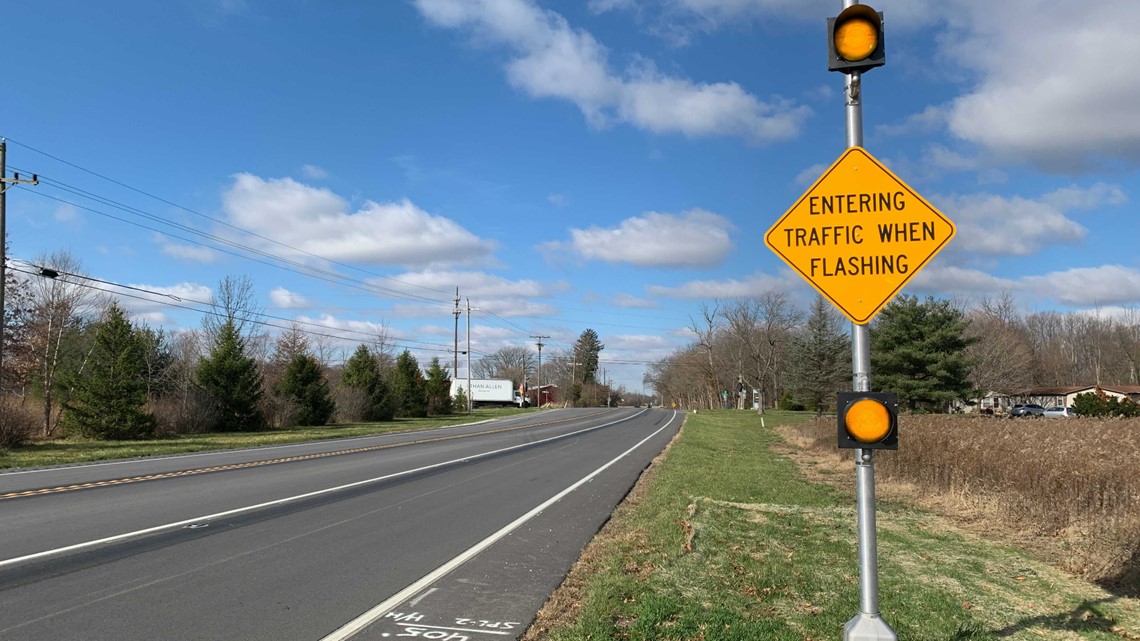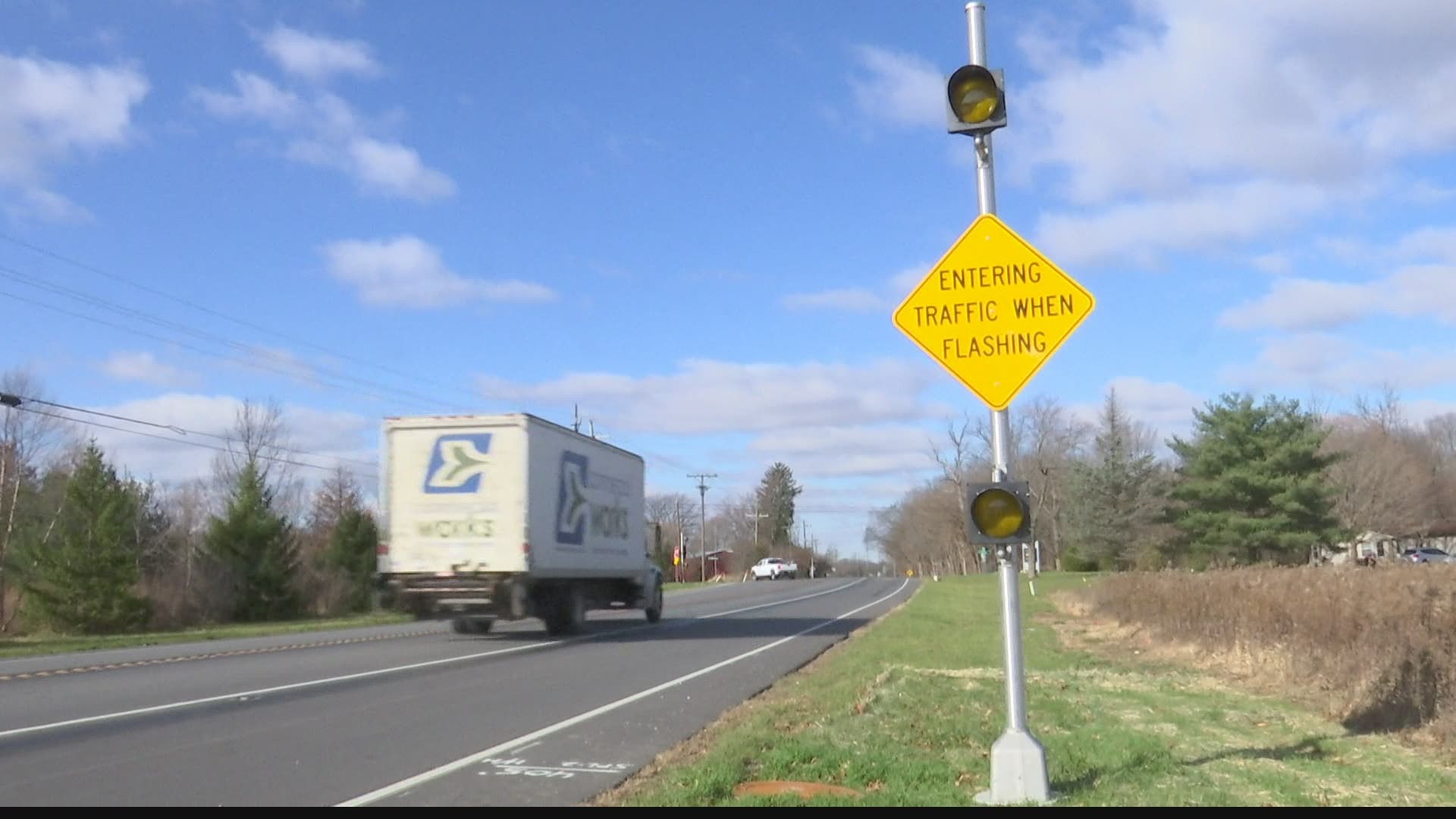NOBLESVILLE, Ind. — Flashing amber lights warn drivers coming from every direction of cross traffic at the intersection of State Road 38 and Hinkle/Moontown Road just east of U.S. 31 in Hamilton County.
The Indiana Department of Transportation (INDOT) completed installation of its first "Intersection Conflict Warning System" about two weeks ago.
About 15 are planned to be operational by July 2021 throughout the state at dangerous highway intersections.
The system gives drivers another set of eyes at two-way stop intersections where a minor road meets high-speed traffic on a major highway.
"We focus on these intersections that have pinged our safety and traffic teams as intersections that have high severity crashes,” Mallory Duncan, INDOT communications director, said. “So, it's not about the amount of the crashes. It's about how bad they are and if there's an injury involved."
Kent Steury came through the Hamilton County intersection Tuesday.
Steury knows of at least one deadly crash here in the 20 years he's lived in the area. He once had a close call himself.
“I think it helps, although I'm never going to trust a flashing or non-flashing light to see if there's cars,” said Steury. “The angle is bad, and you don't have a good point of view for oncoming traffic."


Drivers on the major road see a static “ENTERING TRAFFIC WHEN FLASHING” sign and flashing amber warning lights when a vehicle is waiting on the intersecting minor road.
Drivers on the minor road, in addition to a stop sign, will see a constantly illuminated blackout sign message “TRAFFIC APPROACHING WHEN FLASHING” and an amber flashing light when a vehicle is approaching the intersection on the major road.
Allison Parks' parents warn her about the intersection when she leaves the house every day.
“I think it’s very helpful and it’s making the road safer,” said Parks, waiting at the stop sign on Moontown Road. "Obviously, I'll look both ways before I go, but then I'll double check that to make sure I didn't miss anything.”
INDOT says Intersection Conflict Warning Systems in other states have been shown to reduce accidents by 20-30 percent in their first year in operation.

